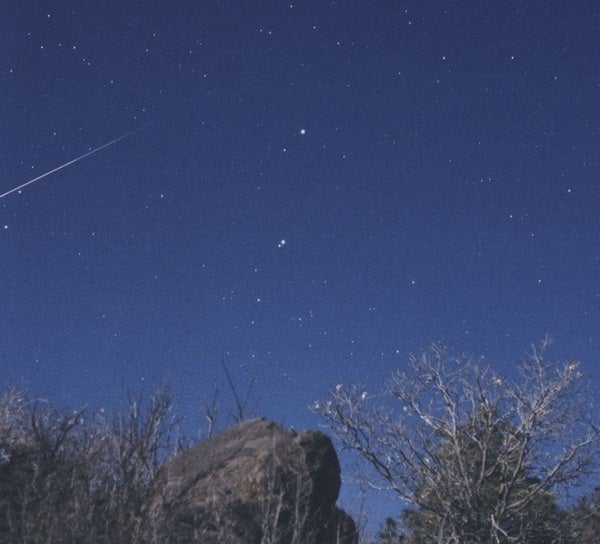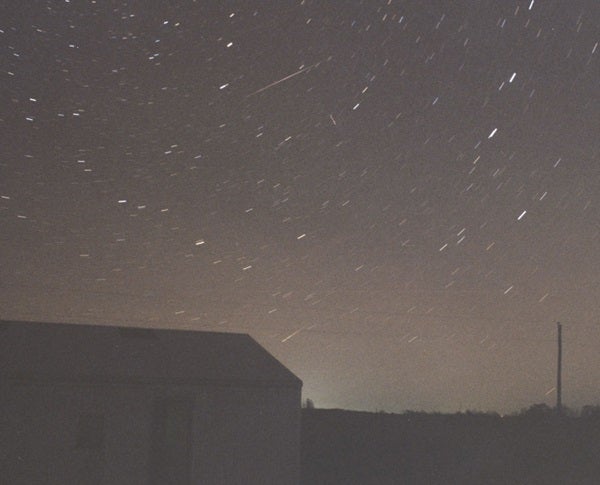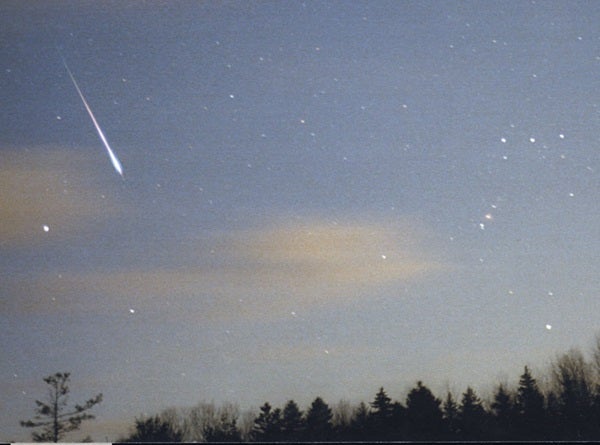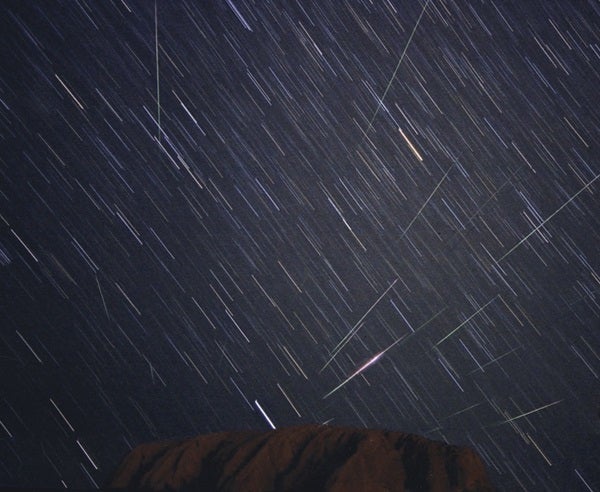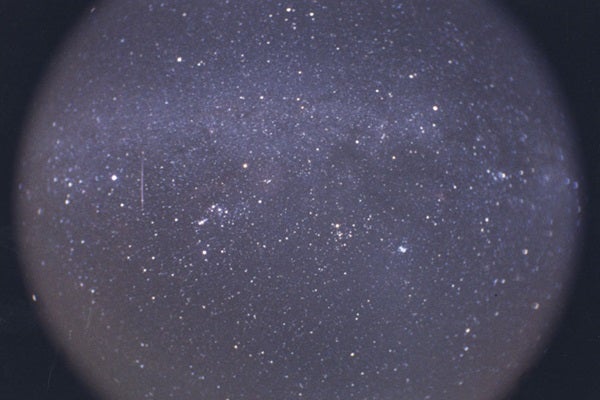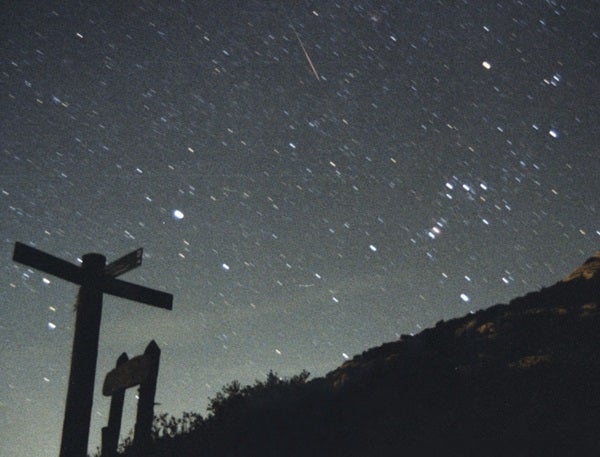November’s Leonid meteor shower offers a great opportunity to get outside and enjoy nature’s light-show fantastic. Bill Cooke predicts the shower’s peak will take place November 18 between 11:45 P.M. and 1:33 A.M. EST early November 19 (See “Get ready for the Leonids” in the September 2006 issue). Astronomer David Asher of Armagh Observatory in Northern Ireland predicts around 100 meteors per hour near the shower’s peak.
You need no special equipment to observe meteors. A dark site and a clear view of a good portion of the sky are all you really need. If you wish to take a few Leonids home with you, then take some pictures. Use a single-lens-reflex (SLR) camera on a tripod and film (ASA 400 or higher) to take a time exposures. A 45-second exposure will result in no star trails, but longer exposures can result in more meteors in the frame.
Remember to dress for your location’s November weather and bring a red light to find your way in the dark while retaining your dark-adapted vision.
Astronomy Associate Editor Laura Layton snapped this Leonid meteor jetting through the handle of the Big Dipper (Ursa Major) November 18/19, 2002. She used Fujicolor 800 ASA film and an Exacta SLR manual camera with a 35mm lens and remote shutter release to capture this 45-second exposure. The view is northeast from Mount Laguna Observatory, Laguna, California, at an elevation of about 5,600 feet (1,700 meters).
Laura Layton
Lluis J. Gil caught this –1 magnitude Leonid November 18, 1999, from Barcelona, as it streaked by the constellation Orion (to the right and below the meteor). The backlit crossroads sign in the foreground and illuminated rock formation in the background add context and character to this image. He shot this image using a Nikon F-60 camera with a 28mm lens and Fujicolor Super HG 1600 ASA film. Exposure time was 1 minute, 45 seconds.
Lluis J. Gil
Jeffrey Pettitt observed this Leonid meteor traveling near Orion the Hunter November 17/18, 1995, from Sanford, Florida. Orion, Taurus the Bull, and the Pleiades star cluster lie on the meteor’s right, respectively, in this shot. He used a Yashica FX-2 camera with a 35mm lens and Kodak 1,000 ASA Kodacolor film to shoot this image.
Jeffrey Pettitt
Barry Burgess saw this bright Leonid meteor November 19, 2002, from Nova Scotia, Canada. He used a Pentax MX camera with a 35mm lens and Fuji Superia 400 ASA film to capture this 30-second exposure. The meteor streaks nearby the constellation Orion (to the meteor’s right), leaving a smoke trail in its wake. Slight cloud cover tinged a pinkish color add character to the composition.
Barry Burgess

